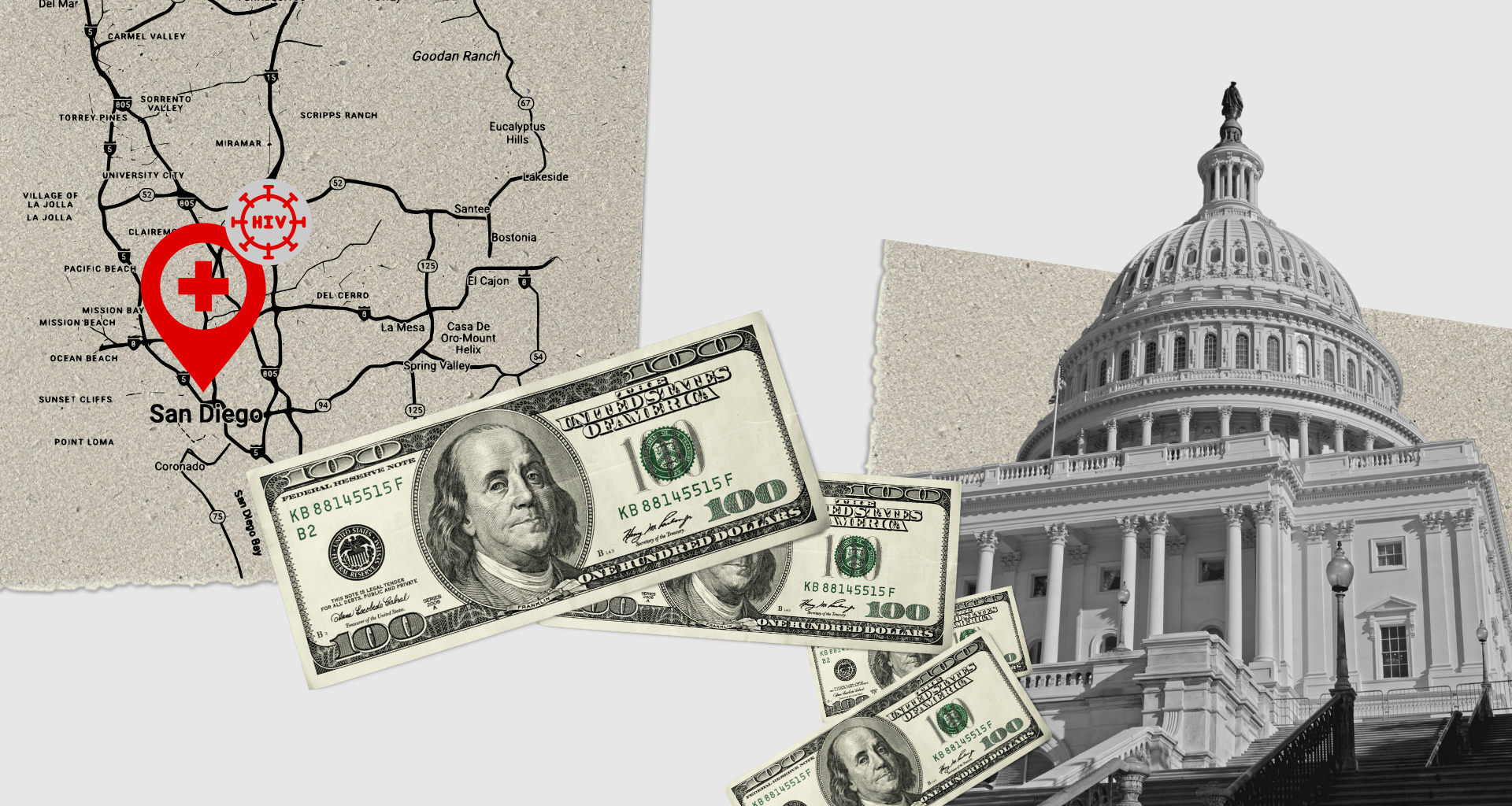Why this matters:
With recent federal cuts to health services, San Diego County’s failure to use around $1.6 million of the Ryan White grant program money to help low-income people with HIV has planning group members worried the funding allotment will be less next year.
San Diego County lost access to $1.6 million in federal funding to provide medical services to low-income people living with HIV after it went unspent last year.
The San Diego HIV Community Planning Group was established in 2015 with the singular purpose of receiving Ryan White Program grants to distribute HIV care and treatment services. Named after a child who was diagnosed with AIDS after a blood transfusion, the grants make up the largest federal funding source the county receives for HIV services, but a portion of the use-it-or-lose-it funds weren’t touched, planning group leaders said.
A county official, speaking at a June 25 meeting of the planning group when the issue first came up, blamed the failure to spend funds on an unexpected drop in people using grant-provided services and a contracting delay related to temporary housing assistance.
From the Documenters
This story came from notes taken by Matthew Miuccio, a San Diego Documenter, at a June meeting of the San Diego County HIV Planning Group. The Documenters program trains and pays community members to document what happens at public meetings. Read more about the program here.
“Historically, every year, up to a third of the cost of primary care comes in those final months – that just didn’t happen this year,” said Patrick Loose, chief of the county’s HIV, STD and Hepatitis Branch of Public Health Services. “It was a really big surprise for us.”
“What we have been able to determine is that many more clients than we anticipated received care through payer sources other than Ryan White,” Loose later told inewsource.
Planning group officials said they also were surprised.
“I guess all I can say is to be in that room when we first heard there was $1.5 million – that was a shock to all of us,” the HIV planning group chairperson Mikie Lochner later told inewsource in an interview. “Immediately, we were like: ‘What went wrong?’”
The planning group’s role is to split the grant money among the various allowable services. But the county, not the planning group, manages the contracts and monitors the flow of grant money to contractors.
In November, the county told the planning group of accelerated spending in the primary care category, recommending the group move money to address these needs. But spending fizzled out when the number of people seeking primary care services fell, according to the county, which concluded that fewer patients sought care through the grant program.
Because planning group leaders don’t receive the final spending amounts until the end of the fiscal year, which is after the end of the grant cycle, they based expectations for primary care spending on what they saw from the number of medical care claims from previous years.
The planning group usually sees unspent money leftover at the end of a grant cycle, but this was the first time unspent funds have exceeded $1 million, according to Lochner, who called the term’s remaining balance a “fluke.”
Typically, there’s somewhere between $700,000 and $800,000 of unused money a year – and that’s with the expectation of around $380,000 of carry-over funds from the grant program.
The group has filed a request to get back some of the unspent grant funds, and Loose said he expects approval in the next six to eight weeks. The money can be used shortly after that. Loose anticipates the return will be as high as $500,000.
Over half of the untouched funds were supposed to be used for core medical services, which includes categories like HIV primary care, medical specialty care such as consults, tests and necessary procedures, dental care and mental health counseling.
The majority of unspent money – about $740,000 – was in the primary care category. These funds were meant to help people living with HIV receive services from Ryan White medical providers at locations across the county.
About $223,000 of the unspent money was designated to help pay for temporary housing assistance for people living with HIV making less than $75,300 in a year. Recipients get 40% of their rent paid for up to 48 months.
That money went unspent despite the county identifying help paying rent as the top unmet need in 2024, according to its data. Unstable housing was the most common reason survey respondents stopped taking HIV medication for more than six months, according to the county.
“We know that the need didn’t change that much from prior years to this year,” said Eva Matthews, a social service provider and planning group member, who called the amount of the unspent money an “anomaly.”
As part of the qualifications to receive Ryan White funding, the county must show there’s a local need. In San Diego County, there were at least 2,000 new cases of AIDS reported in the past five years and 15,035 total people living with HIV, according to 2024 data.
Though the $1.6 million in unspent money goes back to the federal government, the planning group expects to hear news on the upcoming grant amount in the next two weeks.
Loose said the county is looking at tools that could help allocate resources based on expected need, including the number of clients served.
With recent cuts to other federal safety net services, planning group leaders are anticipating a growing number of people seeking aid.
“We’re making the best estimates that we can and hoping like heck that we’re making the right choice,” Lochner said.
Type of Content
News: Based on facts, either observed and verified directly by the reporter, or reported and verified from knowledgeable sources.
